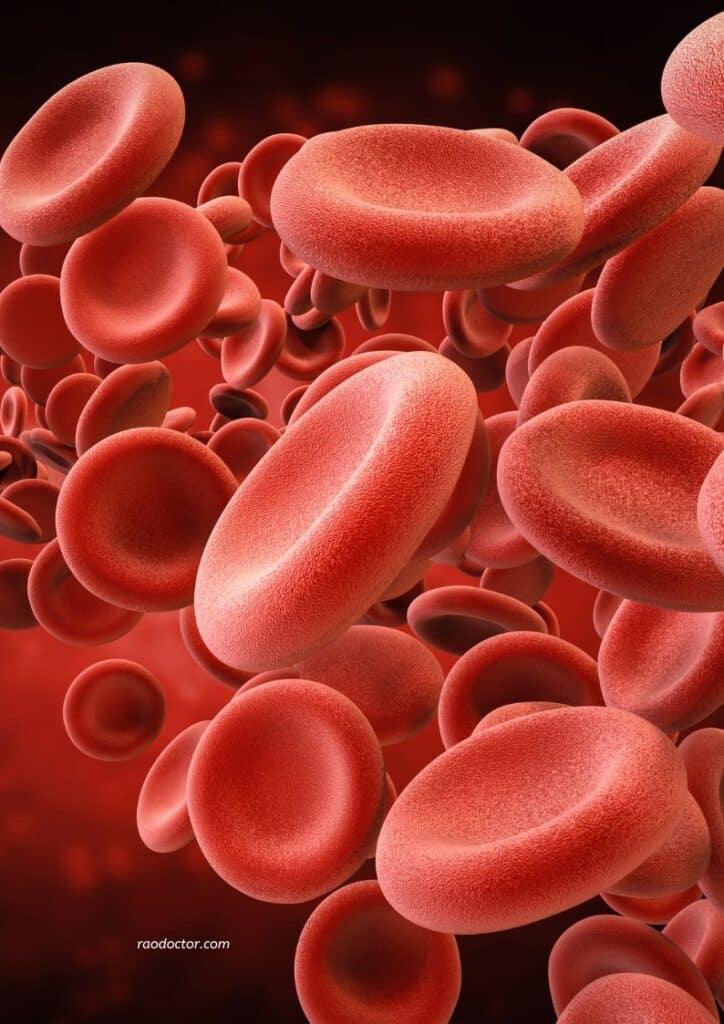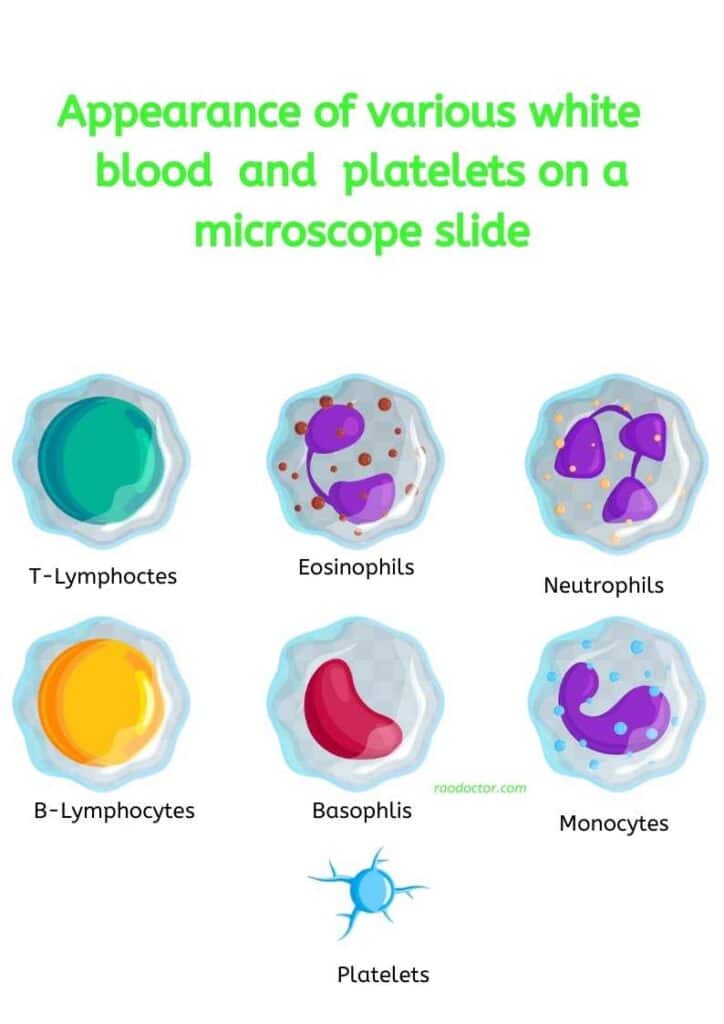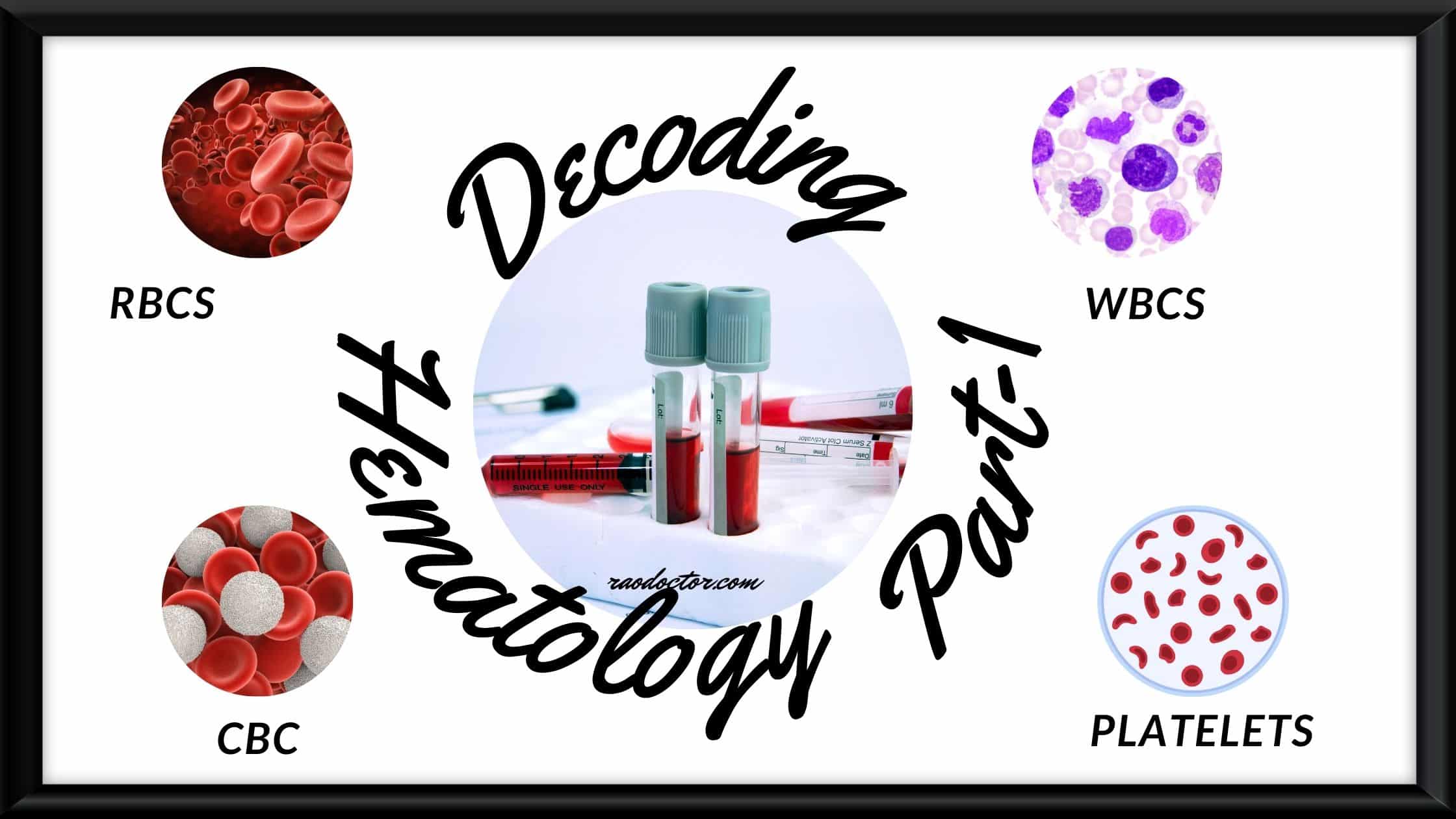Understanding Normal Hematological Test Values and Detecting Abnormalities for Early Disease Detection
Welcome to the fascinating world of hematology! In this ever-evolving field of medicine, understanding normal hematological test values and detecting abnormalities has become crucial for early disease detection.
I am pretty sure that some time or the other, your doctor must have advised you to have a blood test like CBC along with other blood tests. Now, why would your doctor suggest such a test? Let’s learn this “why” in this article.
Hematology, the study of blood and its disorders, plays a vital role in diagnosing and monitoring various health conditions. From red and white blood cells to platelets and plasma, each component of our blood holds valuable insights into our overall well-being.
Image 1 below shows how our blood components are organized in the blood.

Source: FreePik. Designed on Canva
Importance of understanding normal hematological test values
Why or when does your doctor order a hematology test?
Hematological tests provide essential information about the cellular composition of blood and help identify abnormalities that may indicate underlying health issues.
By understanding the normal range of hematological test values, healthcare professionals can better interpret test results and detect potential problems early on.
A commonly performed test is the Complete Blood Count (CBC), which assesses the different components of blood, including
- Red blood cells (RBC),
- White blood cells (WBC), and
- Platelets.
Through this test, various parameters related to these blood components are analyzed, providing valuable insights into a person’s health.
What is Complete Blood Count (CBC) and its components?
The Complete Blood Count (CBC) is a comprehensive blood test that measures various components of blood. It is routinely used to assess overall health, detect diseases, and monitor treatment progress.
The CBC provides information about the number and characteristics of red blood cells, white blood cells, and platelets in the blood. Let’s see how a typical CBC report looks like-

You may have noted the different parameters or components of this particular blood test report in the picture above. This report shows almost a near normal CBC report. Now let’s learn all these normal values in detail.
Normal ranges for red blood cells (RBC) and related parameters
Red blood cells, also known as erythrocytes, are responsible for carrying oxygen from the lungs to different tissues and organs in the body.

The CBC measures several parameters related to RBC, including
- Red Blood Cell [RBC] count
- Hemoglobin (Hb),
- Hematocrit (Hct), that includes
- mean corpuscular volume (MCV),
- mean corpuscular hemoglobin (MCH), and
- mean corpuscular hemoglobin concentration (MCHC).
RBC count
The normal range for red blood cell count in –
- Adult males is typically between 4.5 and 6.00 million cells per cubic milliliter of blood, while
- In adult females, it is generally between 4.0 and 5.5 million cells per cu.ml.
Hemoglobin levels should fall within the range of
- 13.5 to 17.5 grams per deciliter (g/dL) for adult males and
- 12.0 to 15.5 g/dL for adult females.
What is hemoglobin?
Hemoglobin is the red colored pigment present in the Red Blood Cells. It is a molecule formed by the combination of Heme [Iron] and a protein called globulin.
Hemoglobin has the ability to take up oxygen from the lungs and carry it to various tissues that need oxygen for its functioning or metabolic processes.
*Hemoglobin levels may show a slight variation in children of different ages.
What are MCV, MCH, MCHC and what do they signify?
- Mean corpuscular volume (MCV) is a measure of the average size of red blood cells. It is calculated by dividing the total volume of red blood cells by the total number of red blood cells in a given sample. MCV is usually reported in femtoliters (fL).
Example: A patient with a high MCV may have macrocytic anemia, which is characterized by larger than normal red blood cells. This could be caused by deficiencies in vitamin B12 or folic acid.
- Mean corpuscular hemoglobin (MCH) is a measure of the average amount of hemoglobin inside red blood cells. It is calculated by dividing the total amount of hemoglobin by the total number of red blood cells in a given sample. MCH is typically reported in picograms (pg).
Example: A patient with a low MCH may have hypochromic anemia, which is characterized by red blood cells that have less hemoglobin than normal. This could be caused by iron deficiency.
- Mean corpuscular hemoglobin concentration (MCHC) is a measure of the average concentration of hemoglobin in red blood cells. It is calculated by dividing the total amount of hemoglobin by the total volume of red blood cells in a given sample. MCHC is usually reported as a percentage.
Example: A patient with a high MCHC may have hyperchromic anemia, which is characterized by red blood cells that have a higher concentration of hemoglobin than normal. This could be caused by conditions such as hereditary spherocytosis.
Significance of MCV, MCH, and MCHC:
- These parameters are important in diagnosing and classifying different types of anemia.
- They provide valuable information about the size, content, and concentration of red blood cells, which can help identify the underlying causes of anemia.
- Abnormal values of MCV, MCH, and MCHC can indicate certain types of anemia, nutritional deficiencies, or other underlying health conditions.
- Monitoring these parameters can be helpful in tracking the effectiveness of treatment for anemia or related conditions.
Normal ranges for white blood cells (WBC) and related parameters
White blood cells, or leukocytes, play a crucial role in the body’s immune response. They help fight off infections and protect against diseases.
The CBC measures the total number of white blood cells and differentiates them into various types, such as neutrophils, lymphocytes, monocytes, eosinophils, and basophils.
The image above [Image 2] shows the normal values of these components with their normal range.
The image below shows how the various blood cells appear on a microscope slide-

Image source: FreePik. Designed on Canva
The normal range for white blood cell count is typically between 4,500 and 11,000 cells per mcL of blood. However, the distribution of different types of white blood cells within this range varies.
For example, neutrophils should account for 40% to 60% of the total white blood cell count, while lymphocytes should make up 20% to 40%. Any significant deviation from these ranges may indicate an underlying health issue.
Normal ranges for platelets and related parameters
Platelets, also known as thrombocytes, are essential for blood clotting and wound healing. The CBC measures the platelet count, mean platelet volume (MPV), and platelet distribution width (PDW). These parameters provide insights into the overall function and health of the platelets.
The normal range for platelet count is typically between 150,000 and 450,000 platelets per cubic mL of blood. Any significant increase or decrease in platelet count can indicate a potential problem with blood clotting or a bone marrow disorder.
Significance of platelets becomes evident in diseases like Dengue, Malaria and Leptospirosis where the levels sometimes fall to a critically low level. Critically low levels trigger internal bleeding in organs like the stomach, eyes and lungs as seen hemorrhagic dengue.
Additionally, MPV and PDW values help assess the size and distribution of platelets, which can be relevant in certain diagnostic scenarios.
The MPV blood test measures the average size of your platelets, the blood cells that help your blood clot. A normal MPV blood test is around **7 fL to 9 fL (femtoliters)** for non-pregnant adults¹.
The test is usually performed as part of a complete blood count (CBC) which measures how many red blood cells, white blood cells and platelets you have.
It also measures other important features of your blood cells, like their size. A platelet count, platelet distribution width (PDW) and an MPV blood test are parts of a CBC that provide helpful information about your platelets¹.
It’s important to note that MPV results should be interpreted in conjunction with other relevant blood tests and clinical evaluations. Your doctor will interpret the test in conjunction with your medical history and other test results.
Useful Resource-
- My Cleveland Clinic –https://my.clevelandclinic.org/health/diagnostics/23572-mpv-blood-test.
- Self Decode- https://labs.selfdecode.com/blog/mpv/#What_is_MPV
TO BE CONCLUDED…..
As mentioned earlier, my next article will be a continuation of this article where we will learn about abnormal hematology results and how to improve them by taking appropriate treatment.
If you have found this article useful, do consider sharing on social media icons at the bottom of this article. Alternately, you can Click to Tweet here-
Decoding Hematology: Part 1 Share on XIf you have any queries/doubts regarding these blood tests, do contact me on dr.rao@raodoctor.com; I will be glad to help you out.

